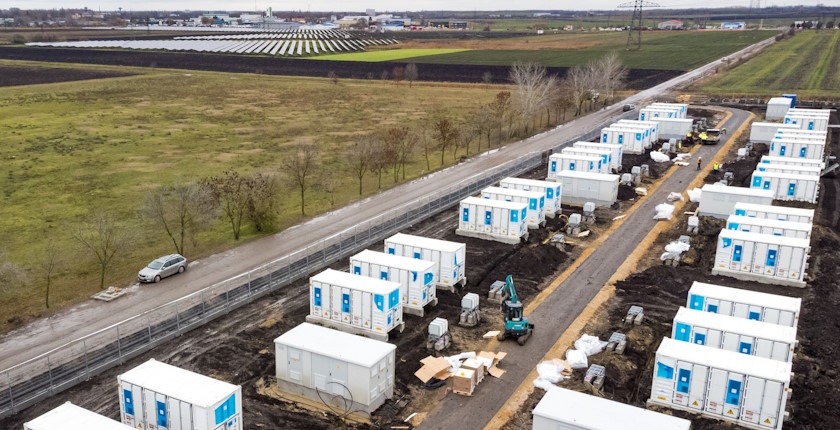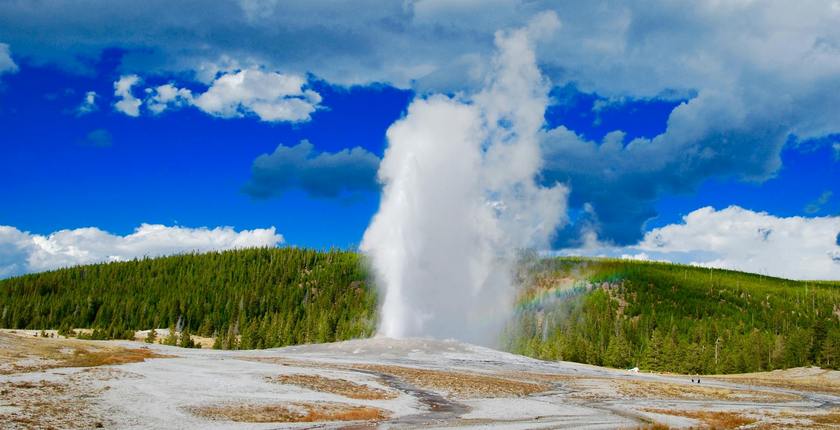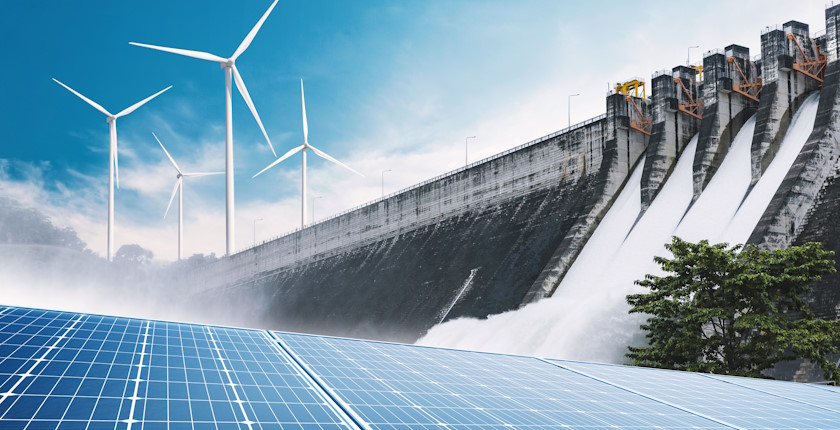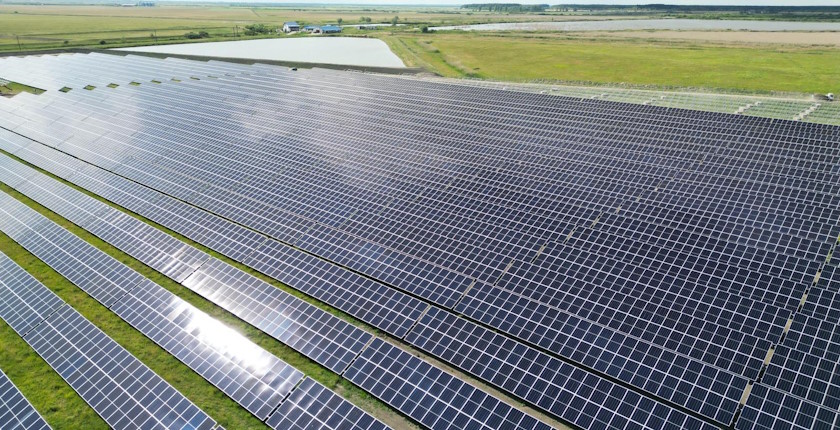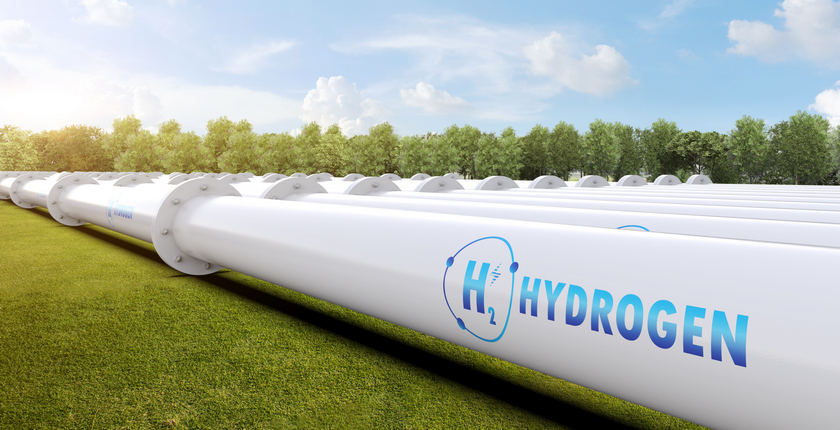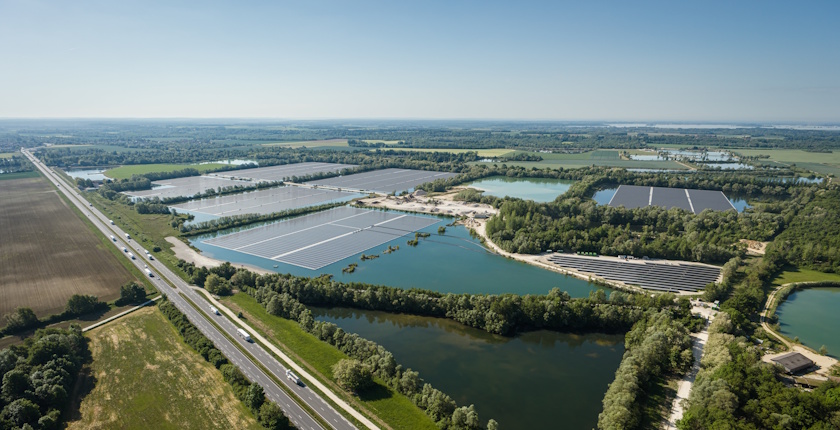
Europe’s largest floating solar power plant begins operation
The largest floating solar power plant in Europe, named Les Ilots Blandin, has officially begun operation in France. With a total capacity of 74.3 MW, the facility is located in the Haute-Marne department, on the site of former gravel pits, and is expected to generate enough electricity to supply 37,000 people annually.
In the Haute-Marne department, the largest floating solar plant in Europe was launched by Q Energy and Velto Renewables. Located near the commune of Perthes, the facility features 135,000 solar panels installed on floating platforms.
It sits on basins formed by flooded former gravel pits, closed in 2020 and owned by local company Etablissements Blandin. The newly inaugurated floating solar power plant was named Les Ilots Blandin, which translates as Blandin’s islets.
The solar panels cover 45.5 hectares
The total area spans 127 hectares, and the solar panels cover 45.5 hectares, project manager at French floating solar developer Ciel et Terre, Vincent Pinchou, told pv magazine France. The company was responsible for supplying and installing the floating structures, modules, and inverters.
The power plant has a total peak capacity of 74.3 MW, with 72.3 MW installed on floating platforms and 2 MW on land. The ground-mounted section was strategically integrated to optimize both energy production and the site’s economic performance. The installation consists of six separate platforms, each ranging in capacity from 8 MW to 17 MW.
According to the developers, the plant will generate enough renewable electricity to supply 37,000 people and prevent 18,000 tons of CO₂ emissions per year.
Floating solar plants are more expensive to build and maintain than ground-mounted ones
In northern regions of France, there is significant potential for the development of floating solar technology. However, Corentin Sivy, Development Director of Q Energy, emphasized that one of the main challenges remains economic. Floating solar plants are more expensive to build and maintain than ground-mounted ones. Moreover, France’s Commission de Régulation de l’Énergie (CRE) does not hold separate tenders for floating projects; they must compete directly with ground-based systems.
The project’s financing was secured in September 2024, with more than EUR 50 million provided by Crédit Agricole Transitions & Energies and Bpifrance. In early 2025, Spanish renewable energy company Velto Renewables acquired a 50% stake in the project.
“Velto is accelerating its development in France with a clear objective: to establish a long-term presence in France for several decades. We are here to stay. Our mission is to develop, operate, and support projects over the long term, in harmony with local specificities; this is one of the reasons we are proud of our partnership with Q Energy in France,” CEO of Velto Renewables Lucas de Haro said at the inauguration.

